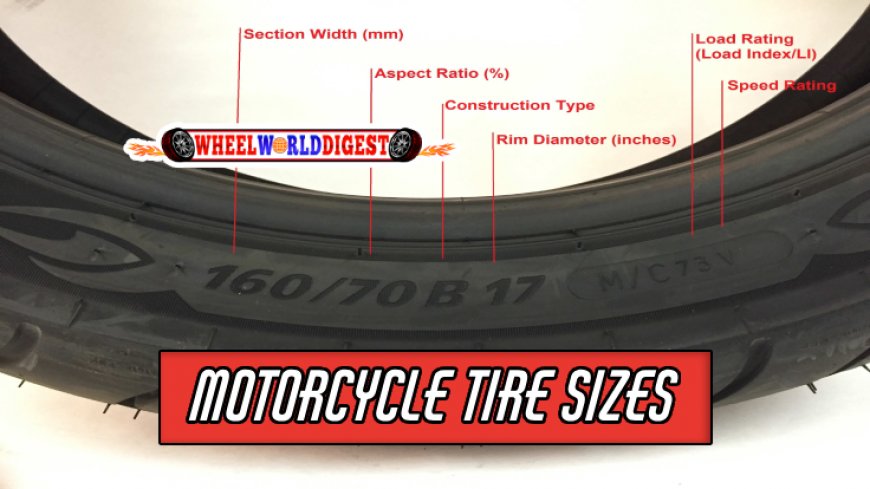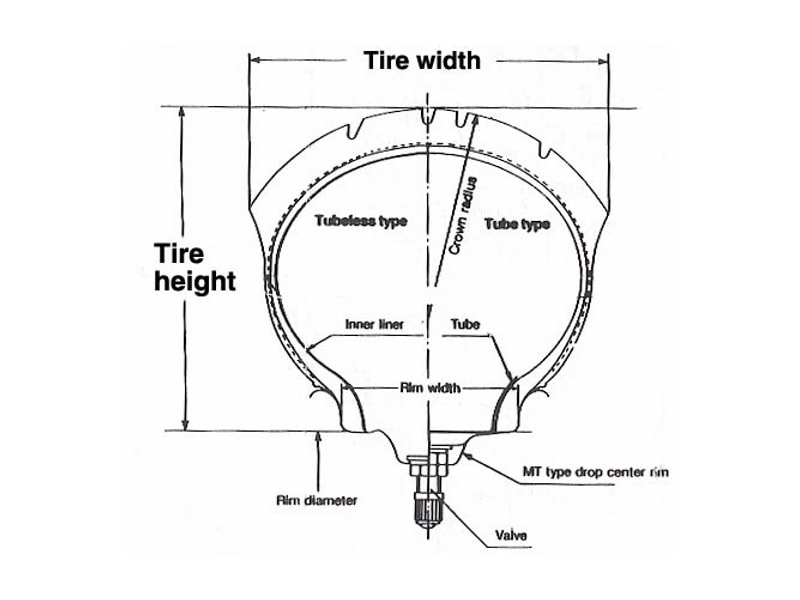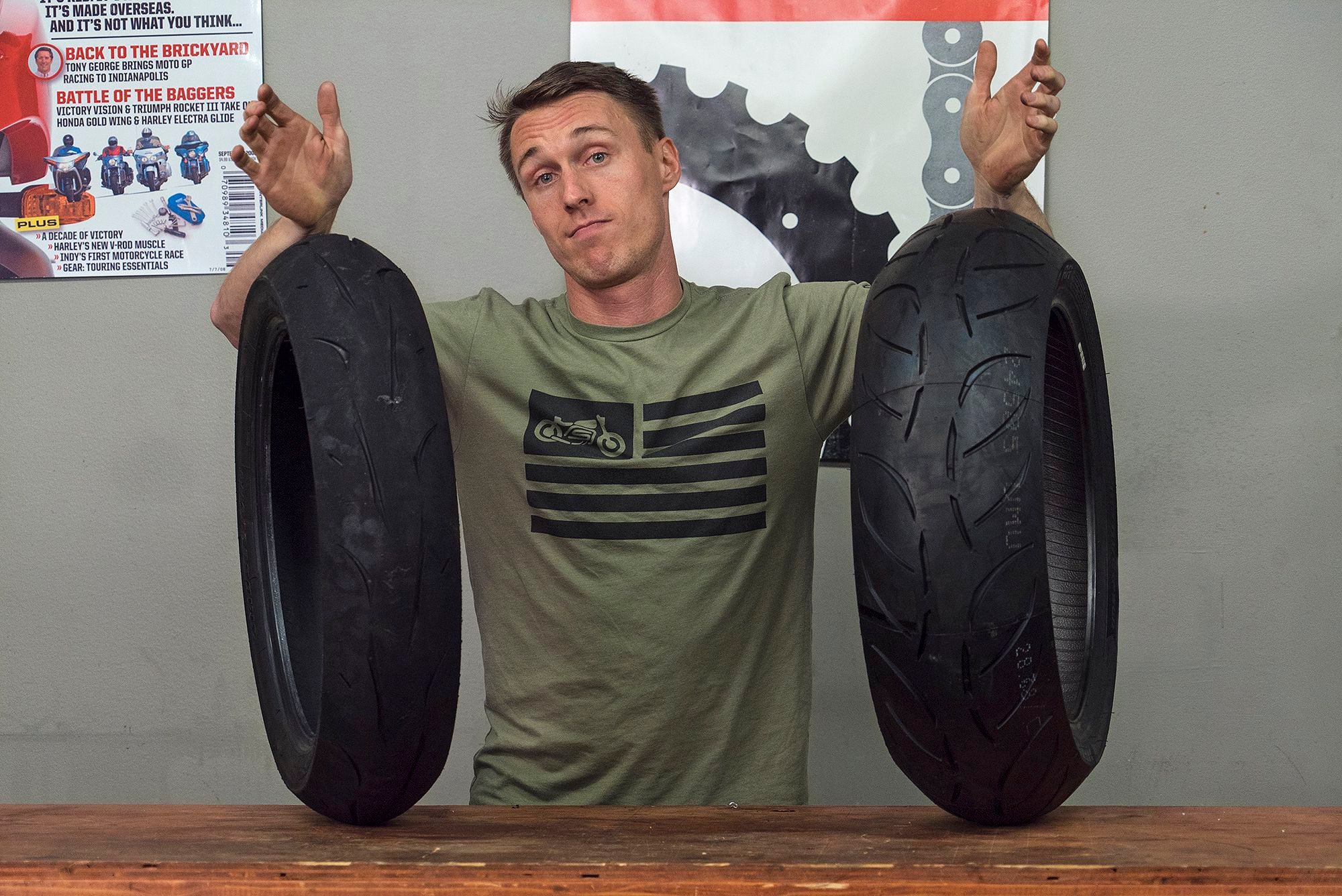Understanding Types And Sizes of Motorcycle Tires
Demystify the types, sizes, and complexities of motorcycle tires to ensure top-notch performance on the road.

Ever wondered about the differences in motorcycle tire sizes? You're not alone. The sheer amount of information and terminology associated with this crucial part of your ride can be mind-boggling. However, with the right knowledge and know-how, it becomes easier to determine the most suitable type and size of tire for your motorcycle. By the end of this read, you'll be better equipped to make an informed choice, ensuring the highest level of performance and safety on the road.
Diving Deep into Motorcycle Tire Sizes
This article is your comprehensive guide to understanding the intriguing world of motorcycle tire sizes, the differing types, their distinctive features, and how to choose what fits your motorcycle best.
Table of Contents
- Deciphering Tire Size Notation
- Different Types of Motorcycle Tires
- Reading Motorcycle Tire Codes
- How to Choose The Right Motorcycle Tire Size
- Pros and Cons of Changing Tire Sizes
- Frequently Asked Questions About Motorcycle Tire Sizes
Deciphering Tire Size Notation

Interpreting tire size notation may seem like deciphering a cryptic code. However, once you understand the basics, it becomes less daunting. These notations typically consist of a mixture of numerals and letters representing various tire parameters, crucial for proper selection. Let's break down a sample tire size: 120/70 Z R17.
- 120 indicates the width of the tire in millimeters.
- 70 is the aspect ratio - the height of the tire sidewall as a percentage of the width.
- 'Z' signifies the tire's speed rating, with Z standing for speeds exceeding 150 mph.
- The R tells us that it's a Radial type tire.
- 17 is the wheel diameter in inches on which the tire should be mounted.
Different Types of Motorcycle Tires

Commonly, motorbike tires are classified into several categories based on their intended use. These include street tires, off-road tires, and dual sport tires. Understanding what differentiates these types will enable you to match your tire choice to your riding style and conditions.
Street Tires: These are designed for paved roads. They typically have a smooth tread pattern for better grip and are made from a softer rubber compound for optimal performance on the street.
Off-road Tires: Off-road, or knobby tires, as the name implies, are for dirt and gravel trails. They have large, aggressive tread blocks for greater traction on uneven surfaces but wear down quickly on pavement.
Dual Sport Tires: These tires are a hybrid of street and off-road types. They offer somewhat good performance both on and off the pavement, making them ideal for riders who enjoy a mix of terrain.
Reading Motorcycle Tire Codes
Other than the size, motorcycle tires also carry additional codes on their sidewall that provide valuable information about the tire's capabilities and specifications. Knowing how to read these codes can be an advantageous tool. Here's some insight:
Load Index
The load index is a numerical code corresponding to the maximum load a tire can carry at the speed indicated by its speed symbol. For example, a load index of 58 denotes a load carrying capacity of 236 kg.
Speed Rating
The speed rating is denoted by a single letter and gives you the maximum speed at which the tire can carry a load corresponding to its load index. For instance, the letter 'H' indicates the tire can safely carry its maximum load at speeds up to 130 mph.
Construction
This is usually a single letter indicating the type of construction used within the tire’s casing. 'B' stands for bias-ply construction and 'R' indicates radial construction.
How to Choose The Right Motorcycle Tire Size

Once you're conversant with tire codes, choosing the right tire size is pretty straightforward. The initial starting point is your bike's manufacturer's recommendations. You'll find these in your motorcycle manual or imprinted on the tire’s sidewall. However, consider the following aspects too:
Motorcycle Type
Motorcycle tires are very specific to the type of bike they are designed for. A sportbike, for instance, requires different tires from a cruiser or a dirt bike. Hence, your bike type significantly pins down your tire choices.
Riding Style
Are you a speed junkie on the track, or do you prefer leisurely weekend rides? Your style determines the kind of tires you need. Performance-biased tires are a good match for high-speed, aggressive riding while a more durable tire serves for long, cruiser rides.
Pros and Cons of Changing Tire Sizes
An aspect motorcyclists sometimes consider is changing their tire size. Aesthetics, performance improvement, or availability might drive these decision. Here are potential pros and cons to bear in mind:
Pros: A wider tire can provide a larger contact surface and potentially more grip. A taller tire can increase the ground clearance of the bike.
Cons: Changing tire size could negatively affect the handling characteristics of your motorcycle. It may also put undue stress on the suspension and braking systems, and could potentially cause clearance issues with the bike’s bodywork.
Frequently Asked Questions About Motorcycle Tire Sizes
As we round up this insightful journey into the realm of motorcycle tire sizes, let's address some frequently asked questions:
How frequently should I replace my motorcycle tires?
Generally, it would be best to replace your motorcycle tires every five years or after running 25,000 miles, whichever comes first. However, visible wear and tear or damage should prompt earlier replacement.
Does tire size impact fuel efficiency?
Yes, it can. Typically larger, wider tires tend to create more rolling resistance and can lead to increased fuel consumption.
Can I mix radial and bias-ply tires on my motorcycle?
Manufacturers generally advise against this due to the contrasting performance characteristics of these two types of tires. However, some bikes may perform adequately with this combination depending on the riding conditions.
In conclusion, understanding motorcycle tire sizes and types can seem complex, but it's an essential aspect of responsible motorbike ownership. It offers not only an insight into how tires work and perform under different conditions, but also equips you with the knowledge needed to recognise the right tire for your riding needs. Always remember safety is paramount, and the right tire size is a significant contributor to that.
What's Your Reaction?









































































